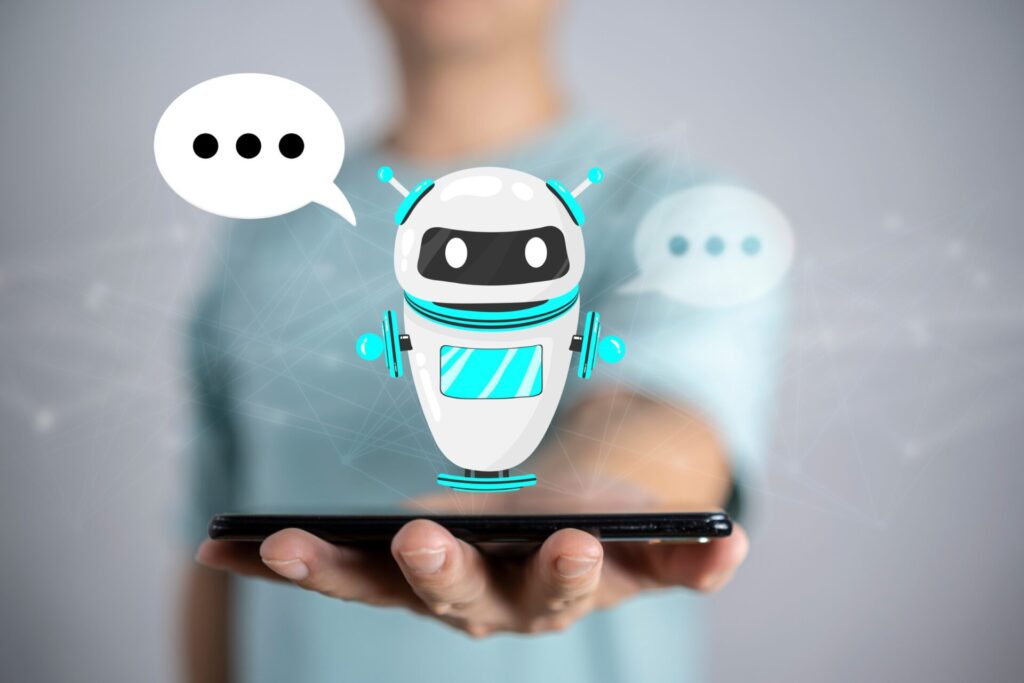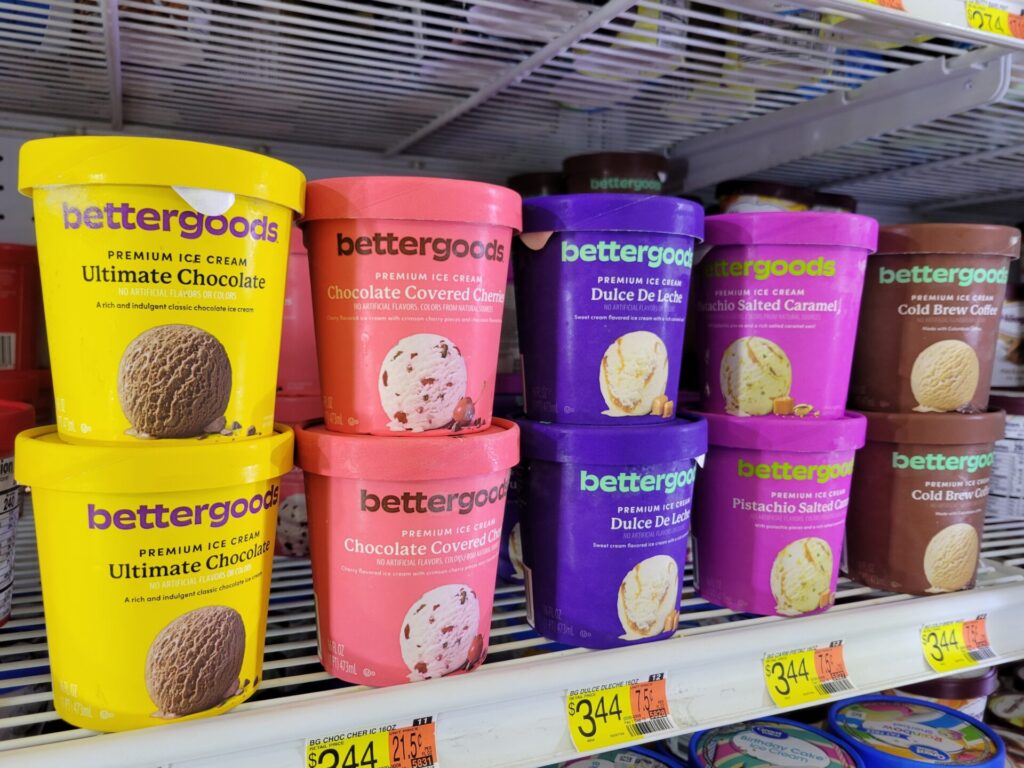We are in the midst of an AI bonanza. Companies across industries are racing to release and adopt the most disruptive AI tools. And while that may make us fear for the future of humanity, it also means there’s a lotta branding going on.
The most exciting consumer-facing example of this is no doubt the chatbot and its ilk—those interactive software-platform-language-model-dealies that are whipping up lines of code and passing the bar exam and telling tech columnists to leave their wives.
There is a lot to consider when naming such a tool, beyond the usual branding considerations. Yes, a company should think about its industry, its competitors, its existing portfolio, the purpose of the product and so forth. But also:
How human do you want this name to sound? Should the tool have a gender? Do you want the name to convey productivity or autonomy, subservience or sentience? All or none of the above?
These names are in conversation with our evolving hopes and anxieties about the technology, not to mention the bots and engines that came before. So, the order is a tall one. Here’s our take on some of the latest.
. . .
ChatGPT
OpenAI’s ChatGPT is hardly the first chatbot. (According to ChatGPT, that honor goes to a 1960s-era bot named ELIZA, which was named after Eliza Doolittle.) But ChatGPT is the one that launched the frenzied zeitgeist we now inhabit, and its dominance is proof of just how far an unfortunate name can go.
Why unfortunate? It’s a four-syllable mouthful. Aurally and visually, it’s all angles (versus a lyrical name like Alexa). And it’s esoteric. Most users couldn’t tell you what GPT stands for, much less what a “generative pretrained transformer” is or does. And, in general, it’s best not to choose a name that makes users feel like dum-dums.
The plus side is that this name—which sounds like something you might call a product in beta—helps set expectations. It successfully conveys that the bot is a bot. It is not human. It is not sentient. ChatGPT sounds like a machine.
In the wake of ChatGPT’s launch, less clunky chat names have followed. YouChat. Chatsonic. Although it’s hardly an exciting or differentiating word, the reliance on it makes sense. Chat conveys the conversational nature of the tools, of course, but it also leverages consumers’ familiarity with products like Google Chat. It’ll be like that, chat implies, just with an algorithm instead of a person.
. . .
Bard
The previous generation of bots—such as Alexa, Siri, and Cortana—came under fire for projecting old stereotypes onto new frontiers. Specifically, some critics didn’t love that virtual assistants were given female-sounding names (and often female-sounding voices), thus reaffirming the historical view that women are meant to be bossed around.
If anything, this new generation of names is skewing male. And we’d include Google’s AI chatbot Bard in that. Sure, you probably don’t know any actual guys named Bard, but there is one person synonymous with the term: Mr. William Shakespeare.
In a branding sense, this name succeeds in many ways that ChatGPT fails. It’s quick to say. It’s easy to pronounce. And it manages to walk the line between common and uncommon. As a specific epithet but also a general term for a poet, it feels both personal and descriptive.
It’s not all gravy. For some, the name might seem pretentious or old-fashioned, eliciting memories of 11th grade English essays. It might also suggest that this interactive AI is there to specifically help with writing (it’s not). Yet the overarching suggestion is one of creativity, which is what sets this generation of AI apart.
. . .
Claude
Anthropic, a company that has vowed to pursue the creation of “helpful, honest and harmless” AI systems, has a company name that suggests a focus on people as much as machines. (The word anthropic literally means “related to human beings”). And Anthropic’s executives gave their chatbot a very human name too: Claude.
Using a human name can help a bot feel relatable and convey its conversational nature without relying on a word like chat. And it’s something consumers are used to, after more than a decade of living with virtual assistants like Siri.
Other companies have gone the human route too. Consider Jasper, the “AI copywriter,” or Poe and Sage, new interactive AI tools from Q-and-A site Quora.
Poe, supposedly an acronym for “platform for open explorations,” evokes poet Edgar Allan Poe. Sage, a gender-neutral human name, evokes wisdom. Jasper, at least according to the company, evokes a “team member” who is “intelligent” and “friendly.” And Claude has positive associations too. Among them: dreamy music (Claude Debussy), expressive painting (Claude Monet), and groundbreaking anthropology (Claude Lévi-Strauss).
That said, the Frenchness of Claude might make it feel less approachable to some users (especially if how you say it rhymes with “road”). And, more broadly, there’s the question of whether these names are too human.
After all, using a straight-up people-name comes with disquieting implications, like the idea that a bot will exhibit human qualities. Sure, that’s cool when it comes to being personable, but humans are also known for free will, selfishness, murder, etc. The idea that the AI bots will be “just like us” is among the scariest scenarios, in some ways.
. . .
Bing
Microsoft and OpenAI have deep ties. So it wasn’t shocking when Microsoft announced that it was adding a new OpenAI-powered chatbot to its search engine, Bing. Nor was it surprising that there was no new name for this tool.
Yes, media reports and Microsoft itself unofficially described this as “the new Bing” and the company is using Bing Chat to reference the feature. But Microsoft didn’t introduce the world to a new anthropomorphized personality. There was no Claude or Poe.
And this makes a lot of sense. First, Bing is already a great name: human (Bing Crosby, Chandler Bing) with onomatopoeic computer vibes (“Your file is downloaded—BING!”). It recalls ping, as in pinging someone for knowledge. It’s short. It’s easy. And perhaps most important, it has plenty of existing brand equity.
Especially as generative AI becomes table stakes—rather than a differentiator—we will likely see other big companies roll out their newfangled tools in similar style.
. . .
Perplexity
The flagship product from Perplexity AI is part chatbot and part search engine. And it is a very cool tool, providing both real-time information and footnotes showing exactly where its answers come from (neither of which ChatGPT currently does, btw).
Though the engine is technically called Perplexity Ask, users don’t see that on the homepage. Splayed across the top is simply the word Perplexity, which functionally serves as a name for both the product and the company. And it’s compelling too.
Perplexity might seem like a counterintuitive word to use, given that the purpose of the product is to provide clarity. But it is a technical measure in natural language processing, a key science behind all this stuff. The lower the perplexity, the better a model is doing. That makes it an apt company name for insiders, including recruits.
And even if we think of perplexity as a state of confusion, the name can serve as a metaphor for the disentangling powers of the engine—its ability to produce simple answers to complex questions. Reading the name this way, it is a reference to the problem this company aims to solve rather than the solution it provides, which feels fresh—infinitely fresher than naming the product something like ClarityChat+.
On top of that, the word perplexity has rhythm and musicality. It’s memorable and fun to say. One can only hope they adopt the tagline “Less is more.”
. . .
Of course the technologies behind these names are crucial, the central force shaping the fates of founders, investors, and, you know, potentially all of humankind.
But the way those technologies are introduced to consumers will also mold that arc and help determine where it lands. Let us hope that place is as pro-human as the branding seems to promise.











